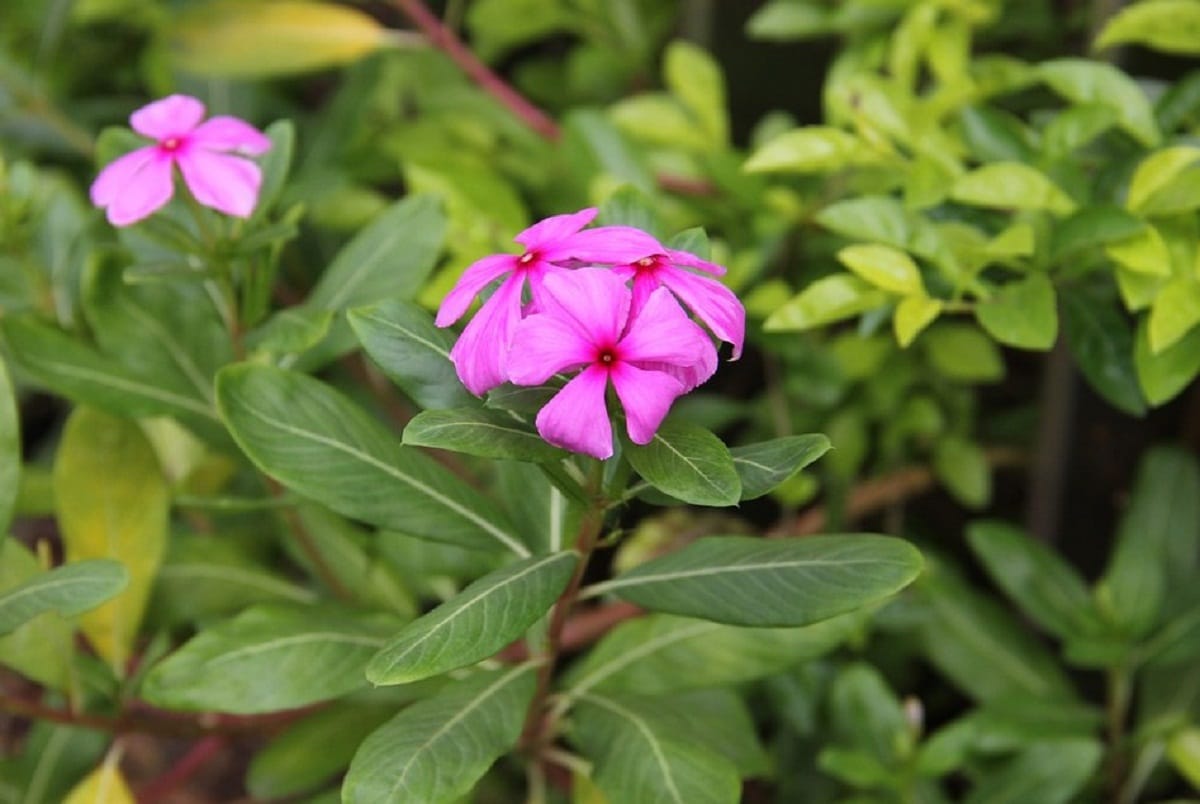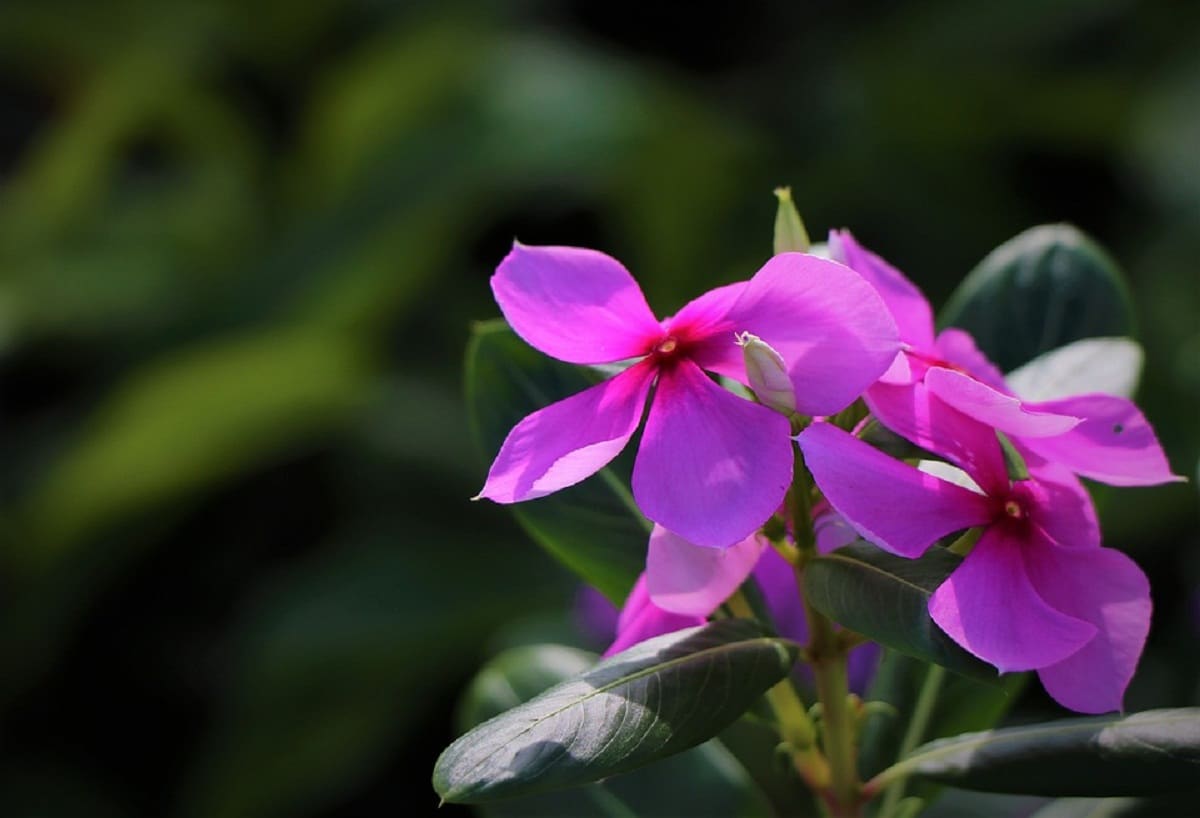
The Madagascar periwinkle, or as it is known under the scientific name of catharanthus roseus, is a plant that belongs to the vascular plant family. It is also known under the name of vinca rosea, and being a little more exact, it is a plant of the Acopynacae type.
As its name implies, it is native to the island of Madagascar. It has the peculiarity of being a perennial plant, but at the same time its form of cultivation has become annual.
Places and countries where they are usually seen
It may have originated in a remote island, but even so it has managed to leave its place of origin to the point of having been seen all over Mexico. And it's not surprising the plant is considered an exotic specimen and it is completely normal to see the catharanthus roseus in Baja California del Sur, in Sinaloa, Veracruz, Yucatán and other places.
A curious fact about this plant is that they are very small if you compare them with other plants. They would be something like a specimen to decorate apartments, offices, windows and others, without taking up too much space.
Of course it all depends on where they are planted and if it is maintained, in such a way that it can be kept to a certain size. And although it had its origin in such a remote place, today it is a plant that can be seen not only in Mexico due to its high distribution, but also in different Latin American countries.
Especially in Venezuela, where tends to grow very easily, in orchards, gardens and places where the asphalt is cracked. This is how it can be said that it is a very capable plant to grow in places where other plants cannot.
Features catharanthus roseus
It is a herbaceous type plant that always remains dark green when it reaches its adult stage. When it is in its early stages of growth, the leaves tend to be light green in color.
Because the stems of this plant are not very thick or firm compared to other herbaceous plants, they can acquire a height of 1 meter in a general way. They do not tend to have too much volume on their own, but thanks to the fact that they multiply very easily, at first glance it can look like a large bush and can acquire a lot of ground if it is not controlled.
Similarly, its multiplication is not a problem, as long as you are looking to give a more natural touch to your garden, since once the plant blooms, it tends to give a more beautiful view of the place thanks to its small flowers.
Regarding the dimensions of its leaves, These are usually 2.5 to 9 cm in length at most, but in general, they are usually very small leaves of the oval type. As for the width of the leaves they do not exceed 3 cm. In addition, each bouquet derived from the main stem usually has a pair of leaves that you will always find in opposite pairs.
Despite its enormous popularity in many Central American and Latin American countries, It is a species that is currently in danger. The main reason is because the forests where they usually grow are affected and reduced to ashes to expand crops and agriculture.
Qualities of catharanthus roseus
Easy adaptability for various environments
On the other hand and highlighting its great adaptability, it is easy to plant almost anywhere and it will tend to grow very easily. It can be said that the growth process of this plant is not that complicated, since it does not require high levels of nutrients and nor a specific type of soil to grow.
Does not require a soil with high nutritive levels
Of course, if you plan to plant it in a soil rich in nutrients, it will tend to grow much more easily and will tend to flower in a very short time. And this is where its ability to spread comes into play. Once the catharanthus roseus has blossomed, begins to create a certain number of cocoons where you will find small black seeds.
Easy to collect and handle seeds
These come in a natural wrapper that once ripe, they open too easily. Not to mention, they are very small and light seeds, so the slightest draft of air will scatter them and the cycle will repeat itself.
The good thing about these wrappers where the seeds come from, is that you can tear them off even if they are not completely ripe and store them anywhere, yes, preferably in hot places.
Being constantly receiving heat, the package containing the seeds will accelerate their maturation process and they will come to a point where it will turn brown. There you can open it and get the seeds that are inside.
You can plant them if you want or you can keep them there until you choose where to grow them. Are seeds that have an excellent shelf life and they will not lose their usefulness for long.
Management
For many, this plant may seem the most suitable for decorating gardens and making the fronts of houses and balconies look more beautiful. The truth is that it is a plant that if its corresponding care is not given, these will tend to get sick.
You will know that the plant is sick or that it has been affected by a fungus when you see that leaf color turns dull green. However, this is not all. When this happens, under the leaves there are usually small white dots that, to the touch of the human hand, feel as if they were particles of sand.
Don't worry if you touch them, it won't affect you in the least. Luckily when this happens, simply clean the plant constantly with water. You can go stem by stem, cluster by cluster and gradually remove those white spots that the plant has.
After a certain time, the plant will take on vigor and will no longer need your intervention. On the other hand and although it is a very beautiful plant, you have to be very careful with this. It is very common to see that catharanthus roseus lose its color and shine by not caring for it. And once this happens, little by little the plant will wither.
It is enough to water them with water every two days. They are very resistant plants and it does not matter if you have them under direct sun Or you have them in a place where sunlight falls on them for a certain part of the day, although it is preferable to plant them under much taller plants. This will give a more vivid color and they will stay alive for much longer.
An interesting fact before finalizing is that of this plant you can find different types, and each with almost identical characteristics. But the big difference will lie in the color of your flowers. They are usually fuchsia in color, but there are also white and blood red ones.


